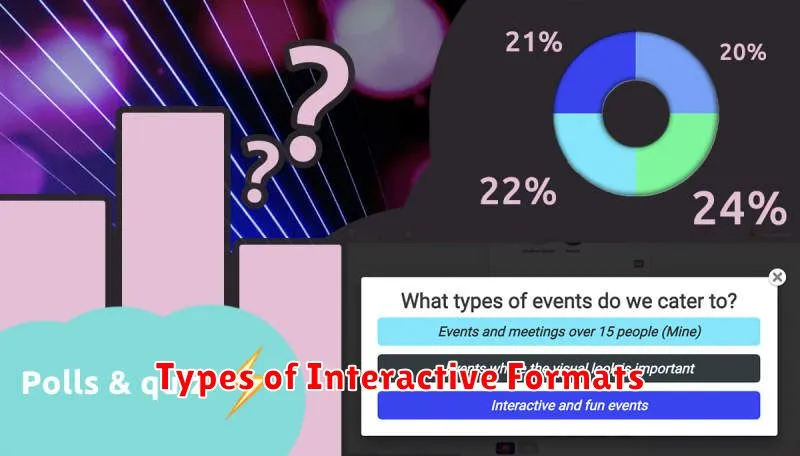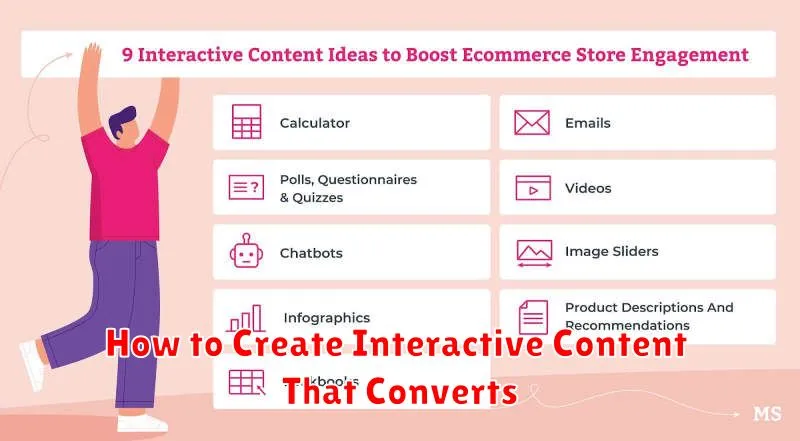In today’s digital landscape, capturing your audience’s attention and driving conversions requires more than just static content. Interactive content has emerged as a powerful tool for engaging users, fostering deeper connections, and ultimately, increasing conversions. Whether you’re aiming to boost sales, generate leads, or simply enhance brand awareness, understanding how to create compelling interactive experiences is essential for success. This article will delve into the strategies and techniques for crafting interactive content that converts, providing you with the knowledge to captivate your target audience and achieve your marketing objectives. From interactive quizzes and polls to calculators and assessments, we’ll explore the diverse spectrum of interactive formats available and how to effectively implement them.
Creating interactive content that resonates with your audience requires careful planning and execution. This article will guide you through the process, from conceptualization to implementation, offering practical tips and best practices. We will explore how to identify your target audience’s needs and preferences, select the most effective interactive content formats, and design experiences that are both engaging and informative. By the end of this article, you’ll be equipped with the skills to create interactive content that converts, driving meaningful engagement and achieving tangible results. Learn how to leverage the power of interactive quizzes, assessments, polls, and more to capture leads, boost sales, and elevate your brand presence.
What Is Interactive Content?
Interactive content is any content format that requires and encourages active engagement from its audience. Unlike static content, which is passively consumed, interactive content invites users to participate, making the experience more immersive and memorable.
Instead of just reading or watching, users might click, swipe, answer questions, or explore various scenarios within the content. This active participation fosters a deeper connection with the content and the brand presenting it.
Examples of Interactive Content
- Quizzes and Polls: Gauge audience opinions or test their knowledge.
- Calculators: Provide personalized results based on user input.
- Interactive Infographics: Present data in a visually engaging and explorable way.
- Contests and Giveaways: Drive engagement and generate leads.
Interactive content is more than just a trend; it’s a powerful tool for driving conversions. By creating engaging experiences, you can capture audience attention, generate leads, and ultimately, drive sales.
Types of Interactive Formats

Interactive content comes in various formats, each serving a different purpose and engaging users in unique ways. Choosing the right format depends on your marketing goals and target audience.
Common Interactive Formats:
- Quizzes & Assessments: These are great for lead generation and educating users about your products or services. They can also help segment your audience based on their answers.
- Calculators & Tools: Providing practical tools, such as ROI calculators or cost estimators, offers value to users and positions your brand as a helpful resource.
- Polls & Surveys: Gather valuable feedback and insights from your audience, which can inform your marketing strategies and product development.
- Interactive Infographics: Transform static infographics into engaging experiences by adding animations, hover effects, and clickable elements.
- Contests & Giveaways: Generate excitement and boost brand awareness through interactive contests and giveaways that encourage participation.
Selecting the right format is crucial for maximizing engagement and achieving your desired outcomes.
Use for Lead Generation
Interactive content serves as a powerful tool for lead generation. By engaging users and requiring active participation, you can collect valuable information in exchange for personalized experiences. Quizzes, assessments, and calculators are excellent examples. Imagine a quiz that helps users determine their “investor profile.” In exchange for their answers, they provide their email address to receive the results. This creates a qualified lead for your financial services company.
Gated content, such as ebooks or white papers, can be enhanced with interactive elements. Instead of simply offering a static download, consider incorporating a short interactive module or quiz beforehand. This boosts engagement and allows you to segment leads based on their interactions.
Interactive infographics and polls also capture attention and encourage data sharing. By asking engaging questions and presenting results visually, you can incentivize users to provide their contact information to see how they compare to others.
Embed on Landing Pages
Embedding interactive content directly onto your landing pages can significantly boost conversion rates. By providing engaging experiences, you encourage visitors to spend more time on your page and interact with your brand, leading to a deeper understanding of your offerings.
Consider embedding interactive elements such as quizzes, calculators, or polls. These tools can help qualify leads, personalize the user experience, and gather valuable data. For example, a quiz can segment users based on their answers, tailoring the subsequent content and calls to action to their specific needs.
Placement is key. Ensure your interactive content is strategically positioned on the page to capture attention and encourage interaction. Avoid placing it too high, where visitors might skip over it, or too low, where they might not reach it.
Keep it concise. Lengthy or complicated interactive experiences can deter users. Aim for short, focused interactions that provide value and quickly deliver a satisfying outcome.
Promote on Social Media
Social media is a powerful tool for distributing interactive content and driving conversions. Sharing your content across various platforms maximizes its reach and encourages engagement.
Tailor Content to Each Platform: Recognize that each social media platform has its own unique audience and style. Adapt your content accordingly. A quiz that works well on Instagram might not be as effective on LinkedIn.
Use Engaging Captions: Craft compelling captions that pique interest and clearly explain the value proposition of your interactive content. Include a clear call to action, encouraging users to participate.
Run Targeted Ads: Consider using paid social media advertising to reach a broader audience and target specific demographics interested in your content. This can significantly boost engagement and conversions.
Track and Analyze: Monitor the performance of your social media promotion efforts. Pay attention to metrics like click-through rates, engagement, and conversions. This data will inform future campaigns and help you optimize your approach.
Track Engagement Metrics
Tracking engagement metrics is crucial for understanding how your interactive content performs and identifying areas for improvement. By monitoring these metrics, you can gain valuable insights into your audience’s behavior and preferences. This data-driven approach enables you to optimize your content for better conversion rates.
Some key metrics to track include:
- Completion Rate: The percentage of users who complete the interactive experience.
- Time Spent: The average amount of time users engage with the content.
- Click-Through Rate (CTR): The percentage of users who click on calls-to-action within the content.
- Conversion Rate: The percentage of users who complete a desired action, such as making a purchase or signing up for a newsletter.
- Social Shares: The number of times users share your content on social media platforms.
Analyze these metrics regularly to identify trends and make informed decisions about how to refine your content strategy.
Examples of High-Converting Interactive Content
Interactive content comes in many forms, each offering unique advantages for boosting conversions. Here are a few impactful examples:
1. Quizzes and Assessments
Quizzes effectively segment leads and personalize recommendations. An assessment gauging financial knowledge could lead to tailored investment advice. Personality quizzes can engage users and drive product recommendations based on their results.
2. Calculators and Tools
Interactive calculators provide immediate value. A mortgage calculator helps users estimate monthly payments, while a savings calculator shows the potential growth of investments. These tools empower users and subtly guide them towards conversion.
3. Polls and Surveys
Polls quickly gather opinions and feedback, fostering a sense of community. Surveys delve deeper, providing valuable insights for product development and marketing strategies.
4. Configurators and Product Builders
These tools allow users to customize products, increasing purchase intent. A car configurator lets users choose features and colors, while a furniture builder allows for personalized designs. This hands-on interaction significantly improves the customer experience.

